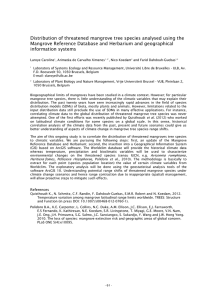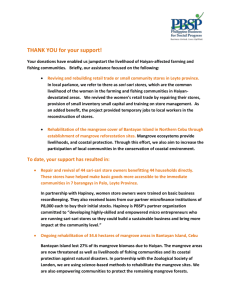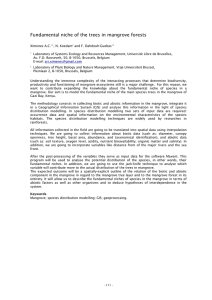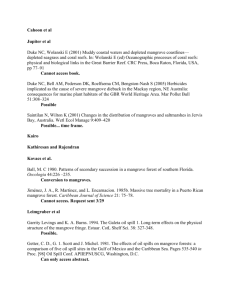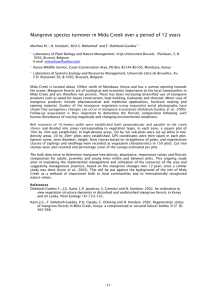Document 11135786
advertisement
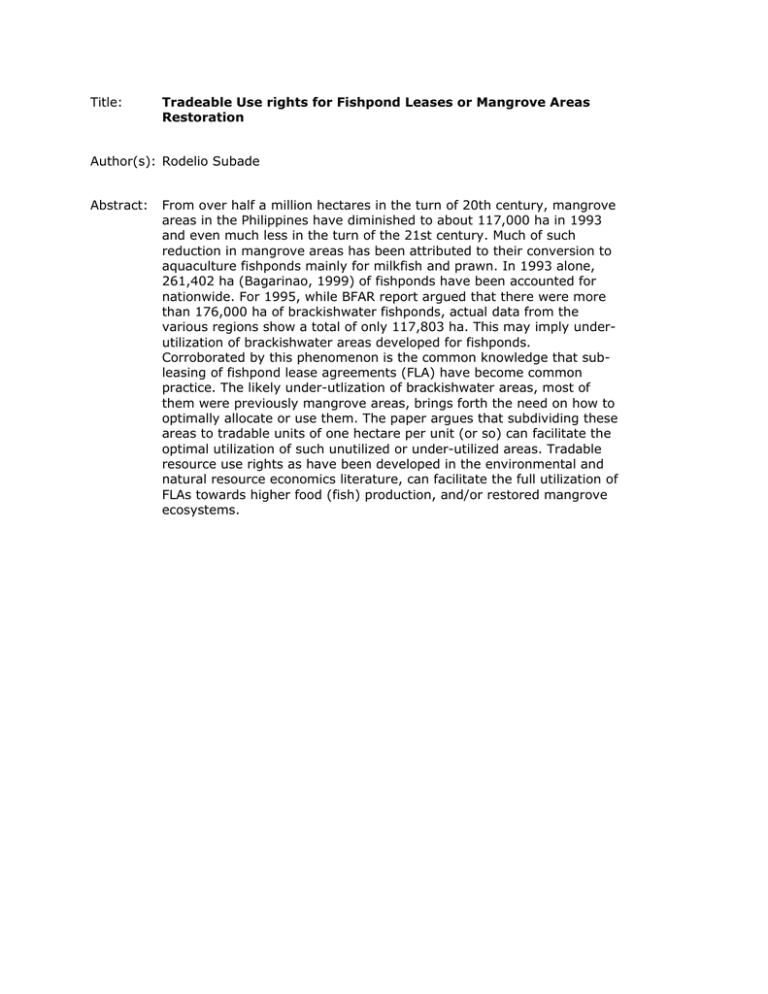
Title: Tradeable Use rights for Fishpond Leases or Mangrove Areas Restoration Author(s): Rodelio Subade Abstract: From over half a million hectares in the turn of 20th century, mangrove areas in the Philippines have diminished to about 117,000 ha in 1993 and even much less in the turn of the 21st century. Much of such reduction in mangrove areas has been attributed to their conversion to aquaculture fishponds mainly for milkfish and prawn. In 1993 alone, 261,402 ha (Bagarinao, 1999) of fishponds have been accounted for nationwide. For 1995, while BFAR report argued that there were more than 176,000 ha of brackishwater fishponds, actual data from the various regions show a total of only 117,803 ha. This may imply underutilization of brackishwater areas developed for fishponds. Corroborated by this phenomenon is the common knowledge that subleasing of fishpond lease agreements (FLA) have become common practice. The likely under-utlization of brackishwater areas, most of them were previously mangrove areas, brings forth the need on how to optimally allocate or use them. The paper argues that subdividing these areas to tradable units of one hectare per unit (or so) can facilitate the optimal utilization of such unutilized or under-utilized areas. Tradable resource use rights as have been developed in the environmental and natural resource economics literature, can facilitate the full utilization of FLAs towards higher food (fish) production, and/or restored mangrove ecosystems.


